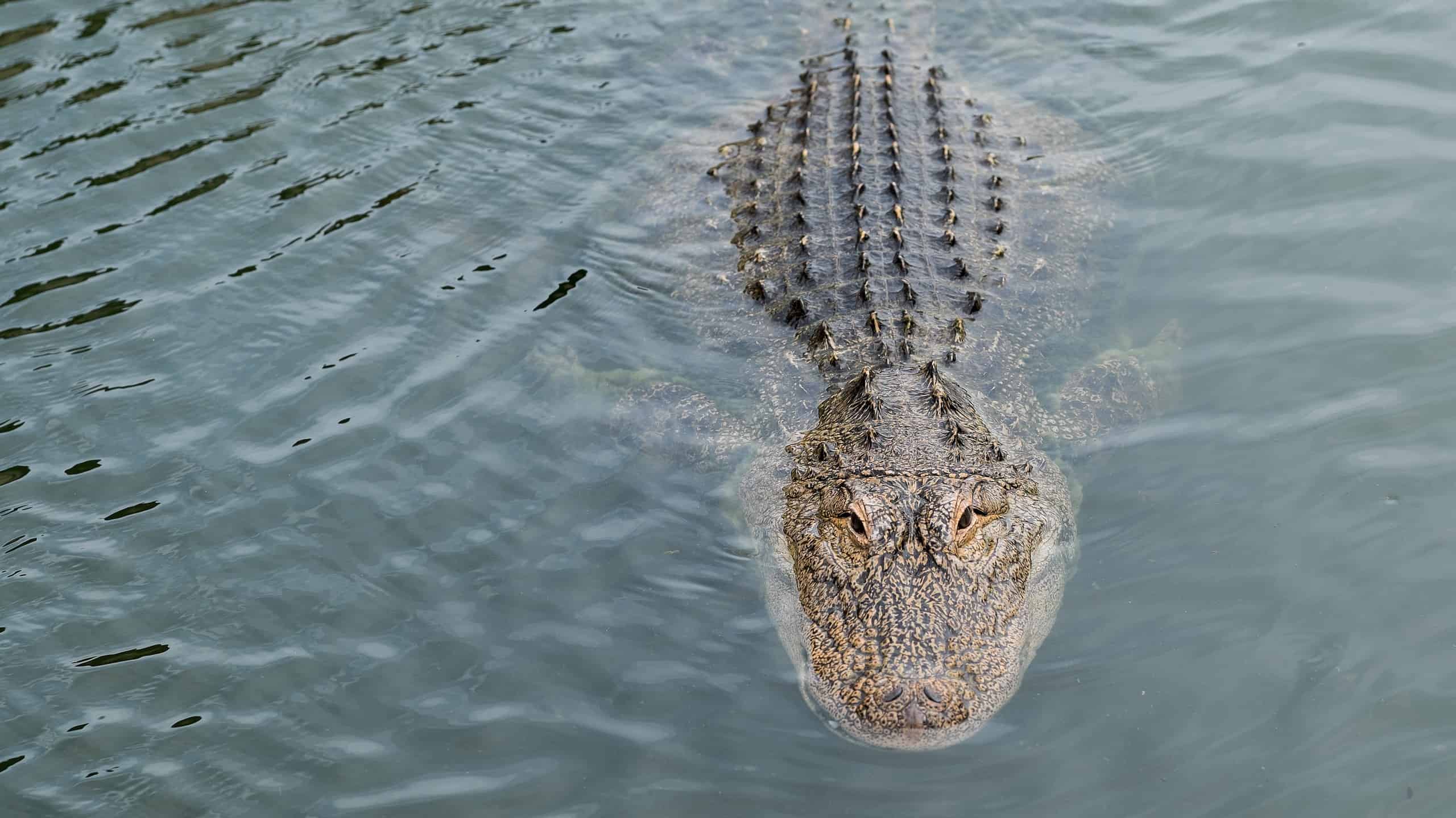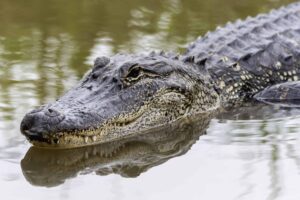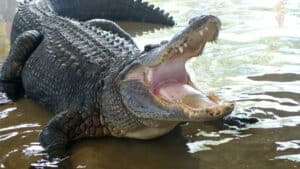When we think of alligators, it is only natural to think of them in places like Florida, Texas, and Louisiana. Basically, we readily associate alligators with warmth. However, we think you’ll be surprised at the temperatures alligators can survive.
But, to understand the amount of cold they can not only be in but also survive in, we need to understand more about alligators in general. Things like their physical characteristics, species, habitat, and population. And, of course, one of the most well-asked questions, how to tell an alligator and a crocodile apart.
How Can You Tell an Alligator and Crocodile Apart?
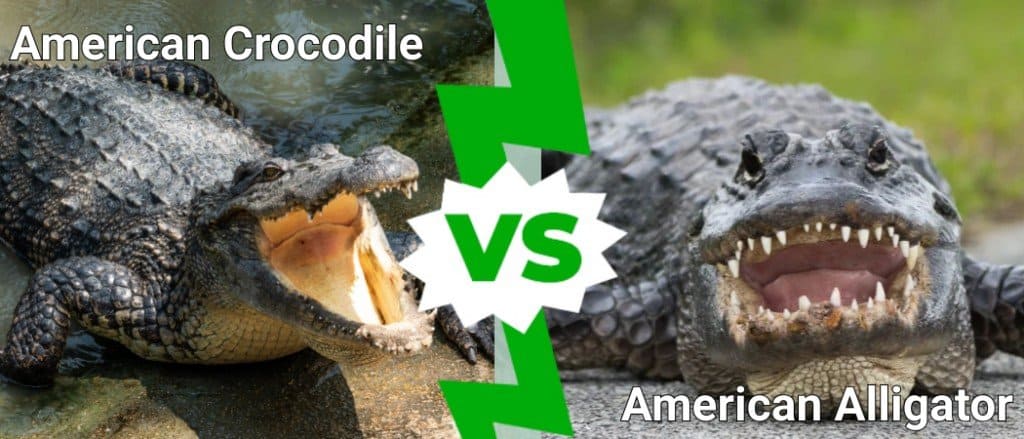
One of the questions we get asked the most when studying anything to do with an alligator is how to tell an alligator and crocodile apart. While these two reptiles have very similar appearances at first, once you take a closer look, it is easy to spot the differences between them.
Alligator and Crocodile Size
American crocodiles are significantly larger than American alligators. Crocodiles typically get to be 20 feet long and weigh up to 2,000 pounds. Alligators, however, usually get to be 11 feet long and weigh 800 pounds.
Now, we understand that when it comes to being close to an alligator and crocodile, their size is usually shocking regardless, and it would most likely be difficult to pinpoint which is which based on that alone, especially as sizes can fluctuate between species.
Alligator and Crocodile Appearance
While the alligator and crocodile have scales, they are different shades. The crocodiles will have green scales, and the alligator will have darker-looking scales.
Another notable difference in their appearance is their snouts. This is one of the easiest ways to differentiate the crocodile from the alligator. The crocodile will have a V-shaped snout, whereas the alligator will have a U-shaped snout.
Alligator and Crocodile Feet
The second most noticeable difference between the alligator and crocodile is in their feet. Alligators have webbed feet that allow them to swim better than the crocodile will. The crocodile does not have webbed feet and instead has a jagged fringe.
These are only a few examples of how we can tell crocodiles and alligators apart. Now that we have a basic foundation on how to tell them apart let’s dive deeper into the American alligator and see what types of alligators there are.
What Types of Alligators Are There?
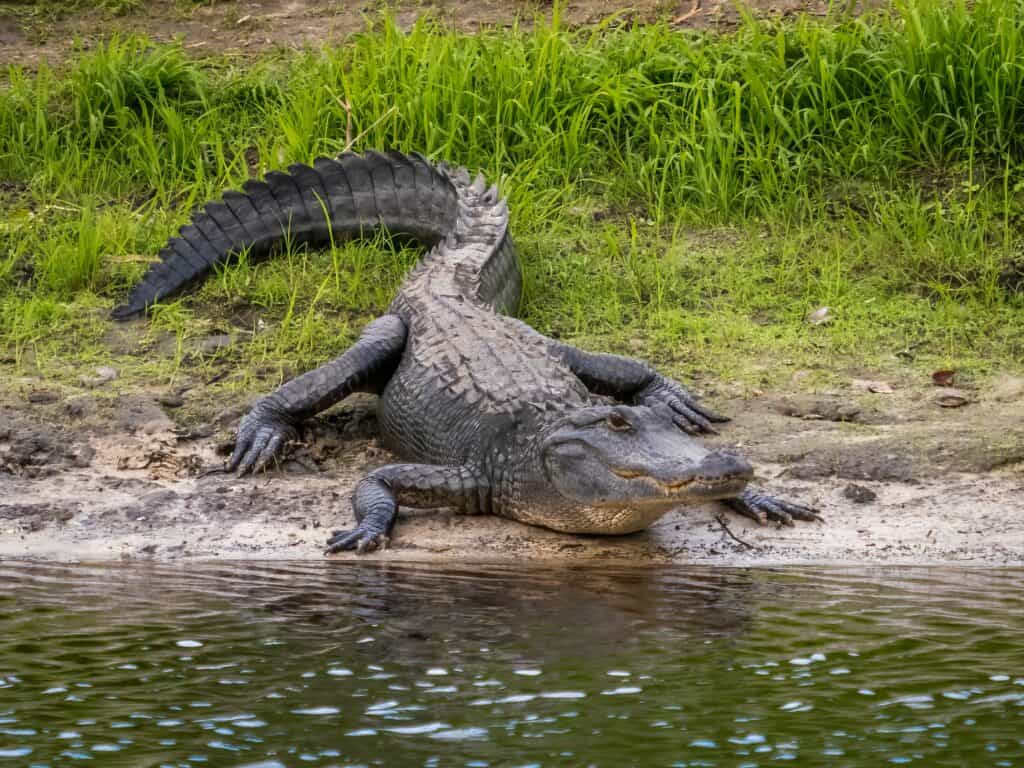
There are two known species of alligators.
©Jim Schwabel/Shutterstock.com
When we think of any type of animal, it can be easy to categorize it as one species. However, this would be incorrect as there are often dozens, if not hundreds or thousands, of species in some animals. Take, for instance, fish. There are an estimated 33,000 different species of fish.
Lucky for us, when it comes to alligators, there are only two known living species. Perhaps the most notorious and well-known is the American alligator, and the second is the Chinese alligator. Let’s take a look at these two species and see the difference that there are between them.
The Chinese Alligator
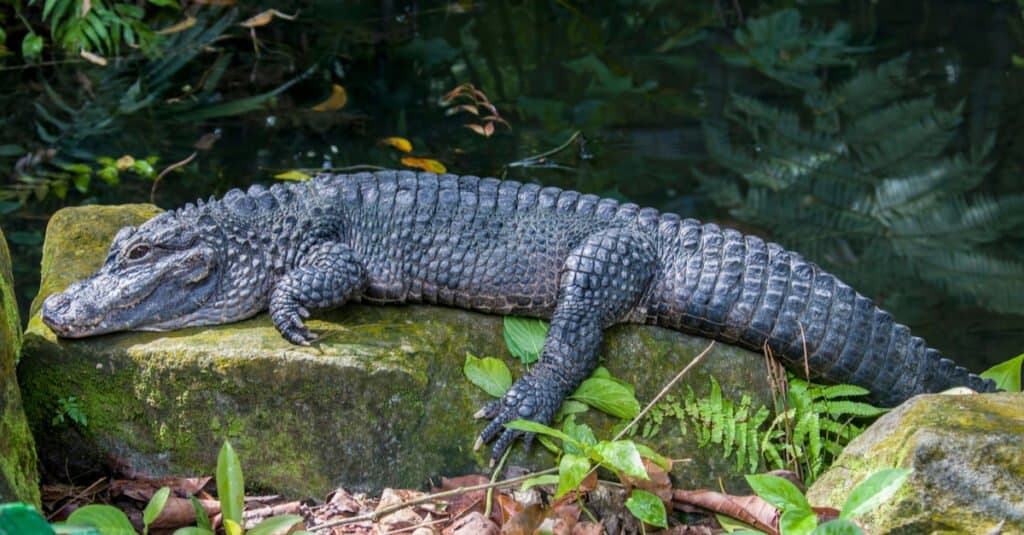
The Chinese alligator can run up to 35 miles per hour.
©Danny Ye/Shutterstock.com
This little guy, while it may seem big to a human standing or swimming next to it, is significantly smaller than the American alligator. If you were to see them side by side, it would be fairly simple to identify which species they come from.
The Chinese alligator has boney plates for skin, weighs approximately 80-100 pounds, and reaches lengths of 4.5-7 feet long. The notable difference in their skin is that their boney plates are all over their bodies, even their underbelly, unlike the American alligator with a soft underbelly.
Due to his size, this carnivore preys on small mammals, water birds, fish, and aquatic mollusks; hatchlings eat insects, spiders, and other invertebrates.
Not only is their appearance significantly different, their population size hardly compares to that of the American alligator. The Chinese alligator has about 20,000 alive in captivity and only about 100-150 in the wild. We will see just how vastly different that is from the American alligator in the next section.
You would be correct if you guessed that the Chinese alligator can be found in China! Their habitat is in the Yangtze River basin in China. They are sociable and will often be found in groups.
The biggest threat to their existence is humans.
The American Alligator
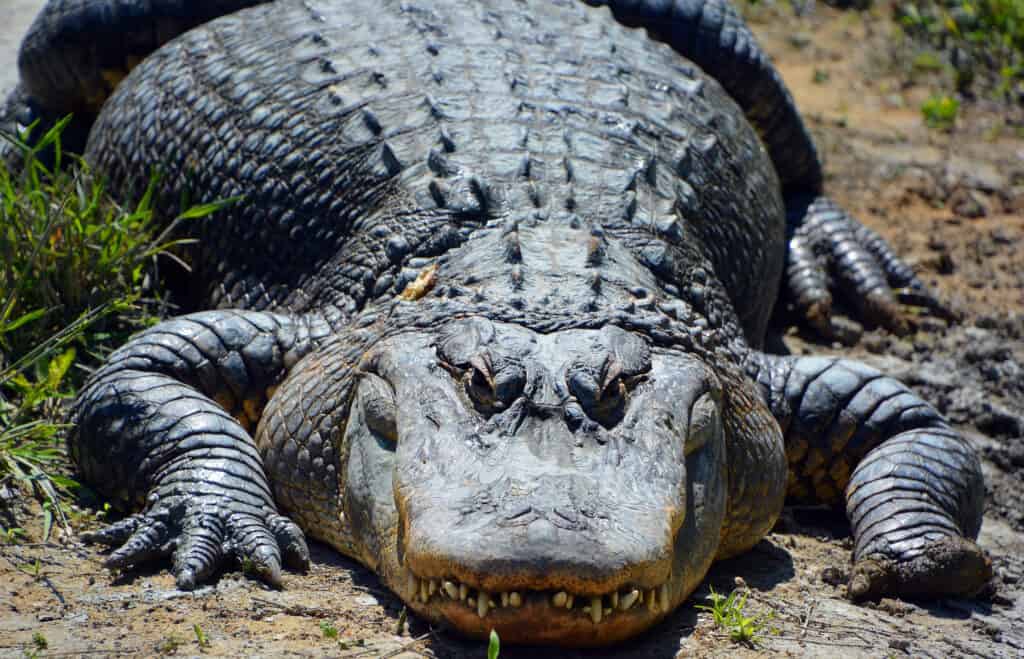
American alligators can run up to 15 miles per hour.
©meunierd/Shutterstock.com
The American alligator is the most well-known alligator and the one we typically refer to when discussing alligators.
This alligator has scales all over his body, usually darker in color. As we said above, unlike the Chinese alligator with boney plates on his underbelly, the American alligator’s scales will not cover his belly. His soft underbelly makes them an easy target during a fight if a predator gets ahold of that soft part.
American alligators weigh anywhere from 400-800 pounds and can reach lengths of 8-15 feet; as we can see, this is an enormous difference from the Chinese alligator.
This carnivore eats fish, snakes, and turtles as his main source of substance. However, it is not unusual to see American alligators consuming other animals when they are hungry, such as birds or other mammals.
The population of the American alligator is nothing short of astounding. There are estimated to be under five million alligators. While this number may seem staggering, it doesn’t come close to other animals such as insects, where there is an estimated 10 quintillion, and fish, where there are an estimated 3.5 trillion.
The largest threat to the American alligator’s existence are humans, birds, and raccoons.
Where Do Alligators Live?
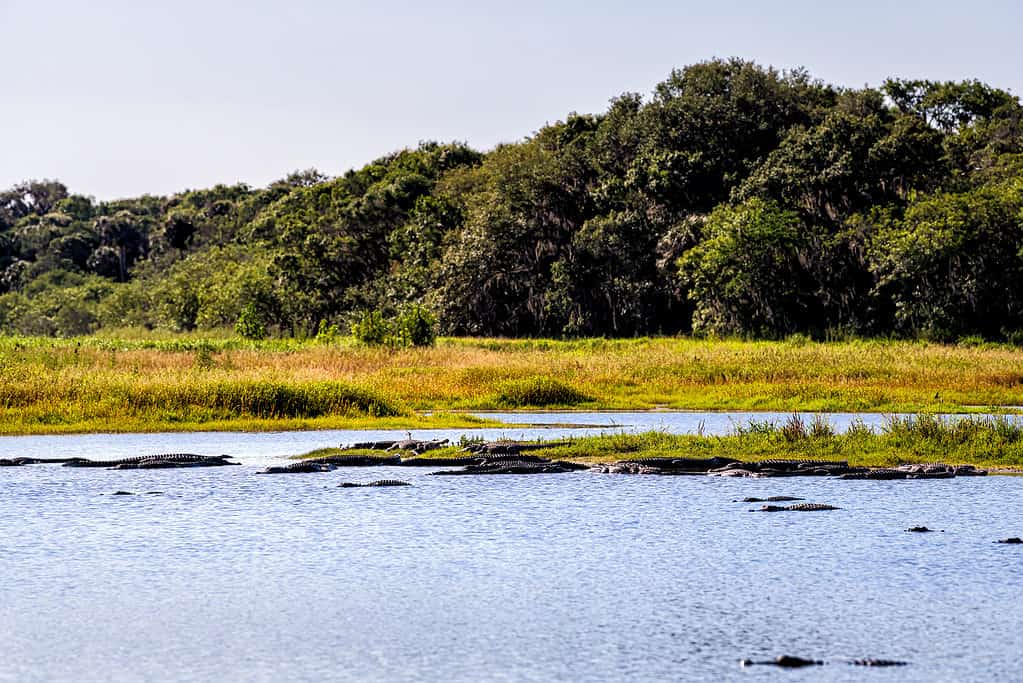
Alligators can be found in fresh water.
©Andriy Blokhin/Shutterstock.com
American alligators can be found in freshwater environments such as wetlands, marshes, lakes, rivers, and swamps.
We have comprised a list of the top ten states alligators can be found in. And out of those ten, the largest population of alligators can be found in two Southern states: Louisiana and Florida. There are estimated to be over three million alligators between these two states alone, making up half the population of five million.
Let’s break this down per state where American alligators can be found here in the United States.
- Louisiana: 2 million
- Florida: 1.3 million
- Texas: 400,000 to 500,000
- Georgia: 200,000 to 250,000
- South Carolina: 100,000
- Alabama: 70,000
- Mississippi: 32,000 to 38,000
- Arkansas: 2,000 to 3,000
- North Carolina: 1,000
- Oklahoma: 100 to 200
Now that we know more about alligators with their species, prey, predators, physical characteristics, population, and where they can be found, we can delve into how much cold alligators can survive in water.
How Much Cold Can Alligators Survive in Water?
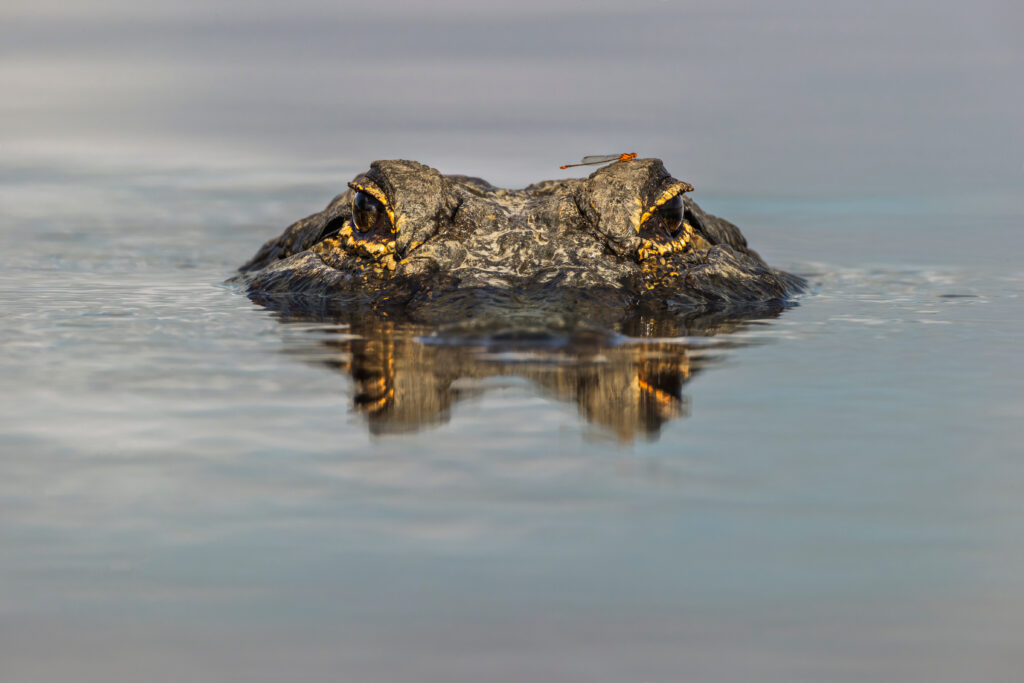
Alligators like to keep the majority of their bodies submerged with only their snouts sticking out.
©Danita Delimont/Shutterstock.com
Perhaps, one of the questions at the forefront of our minds is how long an alligator can be submerged underwater. And the answer is that alligators can spend approximately a maximum of two hours underwater.
The ability to spend two hours submerged underwater would correlate directly to an emergency in cases such as the weather or a predator. Regardless, the time being submerged underwater does not reflect their ability to stay in the water for very long periods of time.
Alligators spend most of their days in water, where they can keep cool and swim around. The American alligator is cold-blooded. This means that this ectothermic animal does not have the ability to regulate its own body temperature, which means that its body will alter according to the surroundings they are in. This rightly paves the way for them to survive in cold conditions.
Alligators’ Icing Behavior
Alligators have what is called “icing behavior,” which is their ability to stay extremely still and not move for long periods. They do this by sticking their snouts above the water so that they can breathe. Due to their cold-bloodedness, their bodies adapt to the weather they are in, unlike warm-blooded animals, who have the ability to regulate their body temperatures on their own.
Alligators have been known to stay so still, in fact, that we might naturally assume that they are dead. Or being able to come up next to them without them even moving.
Because of this ability, it is calculated that alligators can survive at approximately four degrees Celsius, 40°F. While this is in no way optimal for long-term survival, there have been a few alligators studied closely who have lived in this temperature and survived.
The wonders of animals never cease to amaze us in their ability to adapt to their surroundings and not only survive but thrive!
Thank you for reading! Have some feedback for us? Contact the AZ Animals editorial team.

